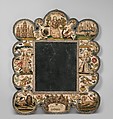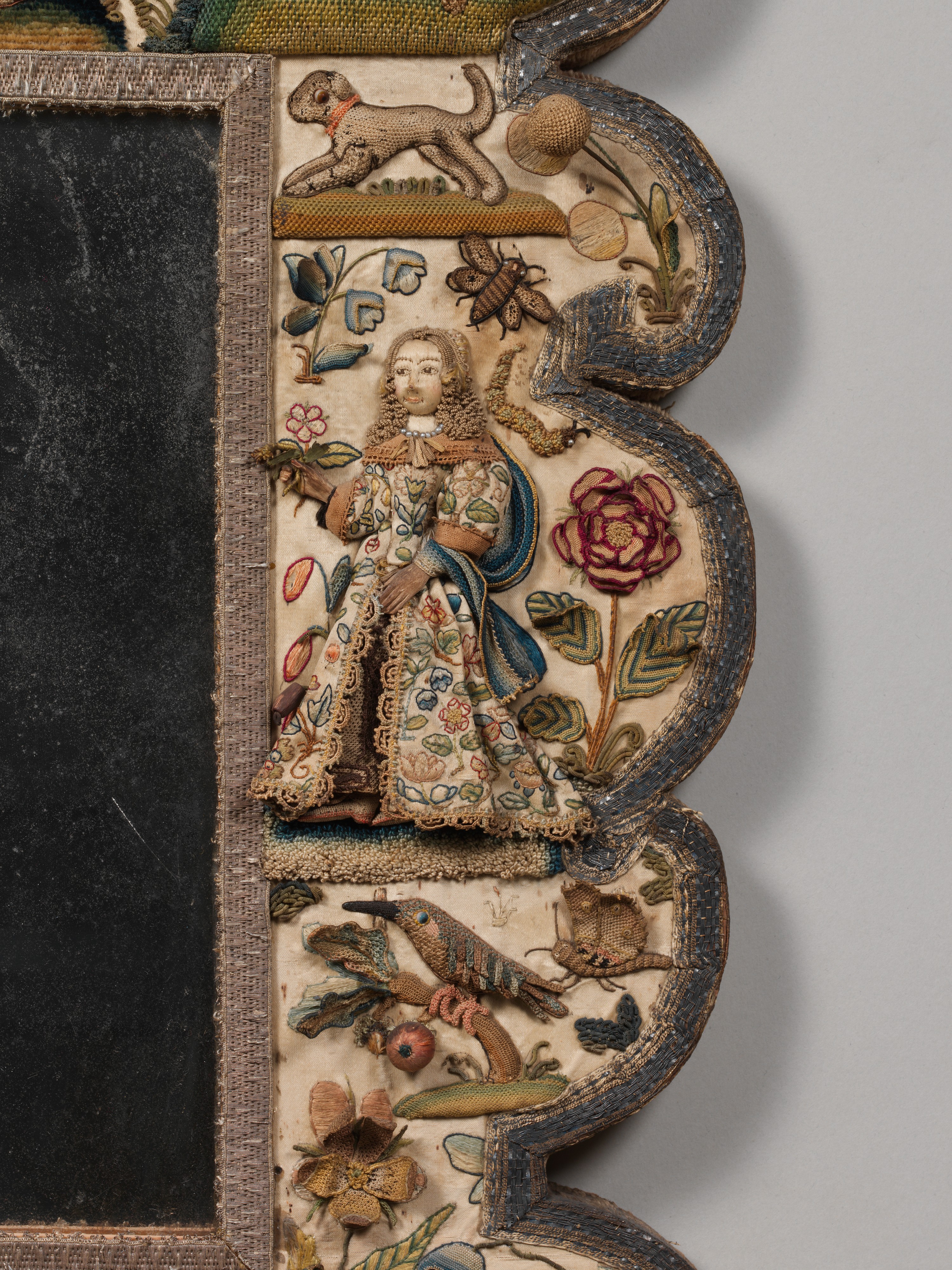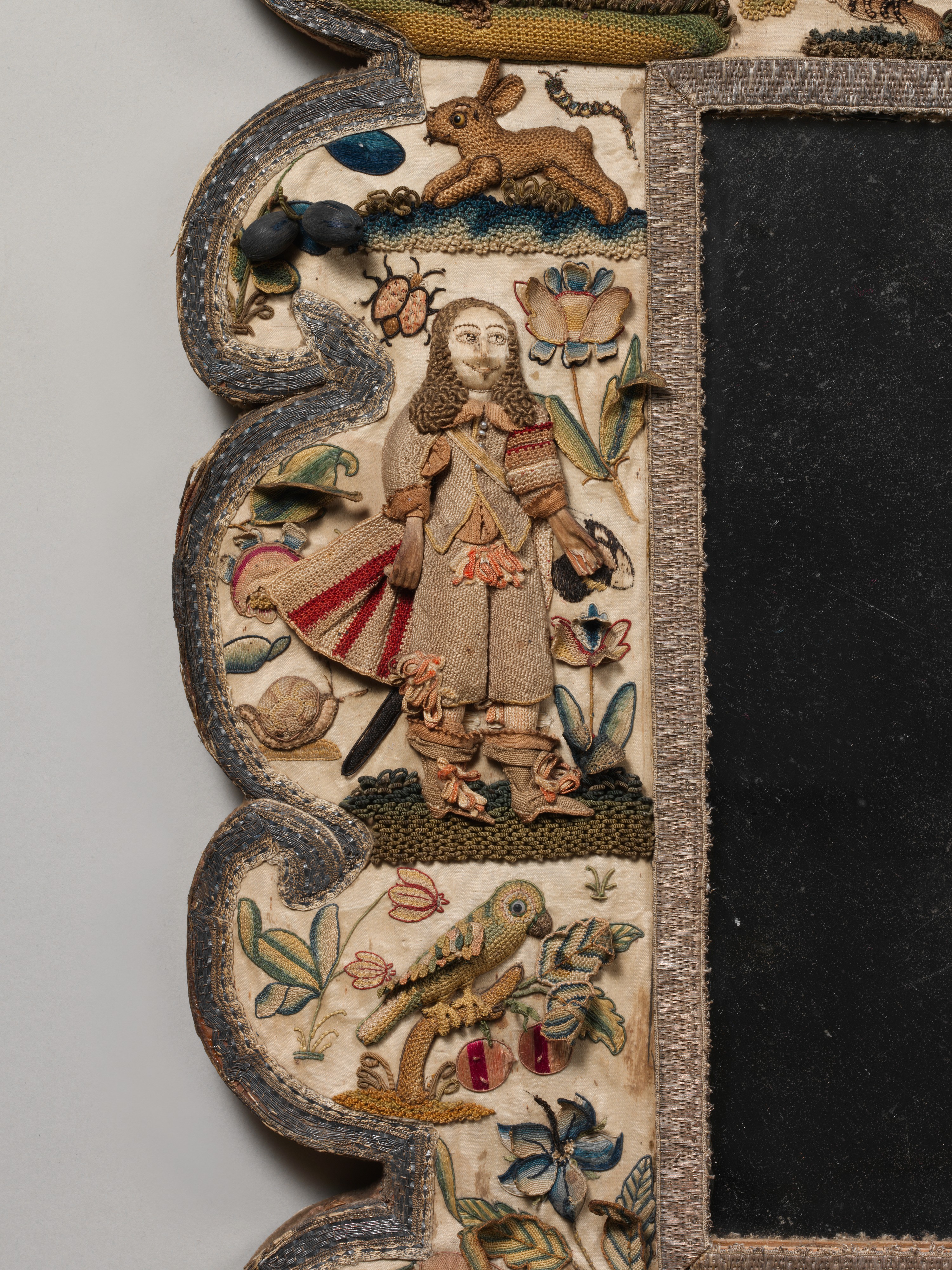Mirror frame
Not on view
Improvements in English domestic glass production in the second half of the century coincided with the fashion for raised-work embroidery and resulted in the production of some of the most spectacular examples of embroidered household furnishings of the seventeenth century.
The three-dimensionality of the embroidery and the creative use of materials on this example are very impressive. The tail feathers of the peacock are created from fragments of actual bird feathers, there are tiny shells and bits of coral in the grotto surrounding the fish pond, and the costumes of the courting couple include details such as real lace trimmings and seed pearls.
The decoration of this mirror refers to a marital union, symbolized by the couple flanking the mirror glass, the two manor houses above them, and the figure of Harmony, in the guise of a young woman playing a lute, at the top of the mirror. The heraldic lion and leopard suggest that the owner was a loyal Royalist, as these animals appear on the royal coat of arms as well.
Due to rights restrictions, this image cannot be enlarged, viewed at full screen, or downloaded.
This artwork is meant to be viewed from right to left. Scroll left to view more.






